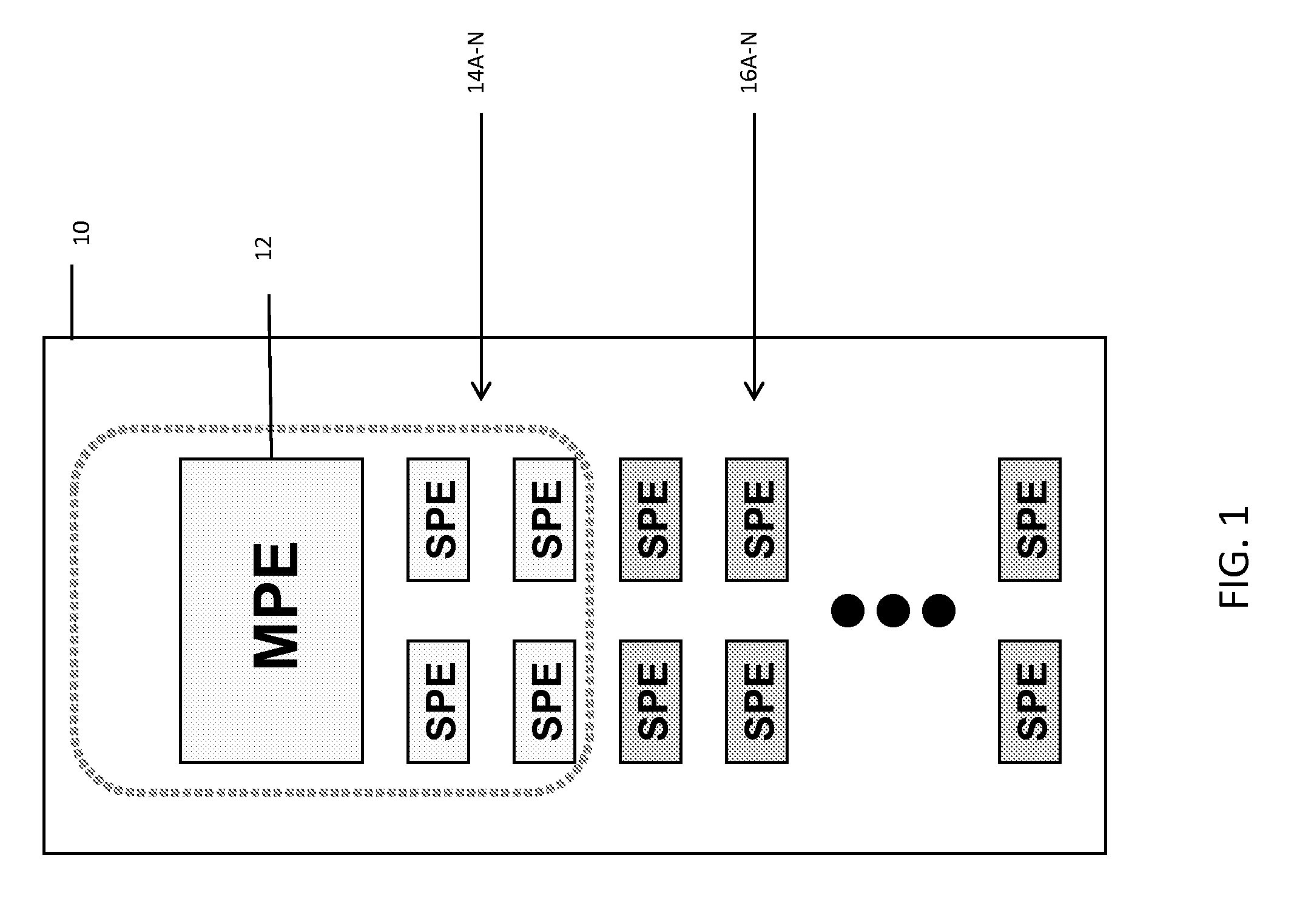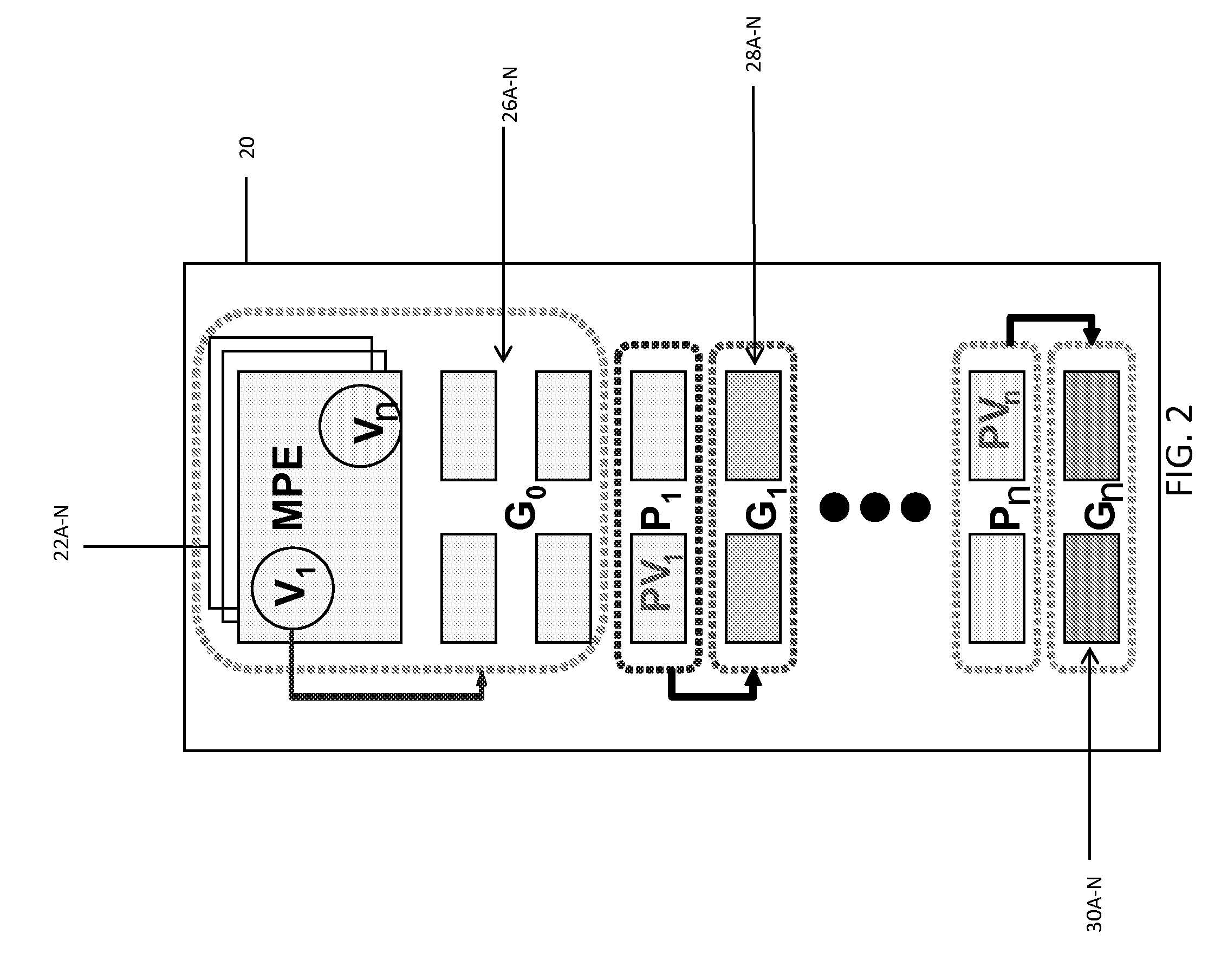Delegated virtualization in a multi-core processor (MCP)
a multi-core processor and delegated virtualization technology, applied in the field of delegated virtualization in a (, can solve the problems of low utilization of multi-core processors (mcps), symmetric mcps, and high power consumption of stand-by spes, and achieve continuous leakage, low utilization rate, and high utilization ra
- Summary
- Abstract
- Description
- Claims
- Application Information
AI Technical Summary
Benefits of technology
Problems solved by technology
Method used
Image
Examples
Embodiment Construction
[0014]As indicated above, this disclosure describes an apparatus, computer architecture, method, operating system, compiler, and application program products for MPEs as well as delegated virtualization in a (e.g., symmetric) MCP. The disclosure is applied to a generic microprocessor architecture with a set (e.g., one or more) of controlling elements (e.g., MPEs) and a set of groups of sub-processing elements (e.g., SPEs). Under this arrangement, MPEs and SPEs are organized in a way that a smaller number MPEs control the behavior of a group of SPEs using program code embodied as a set of virtualized control threads. The arrangement also enables MPEs delegate functionality to one or more groups of SPEs such that those group(s) of SPEs will act as pseudo MPEs. The pseudo MPEs will utilize pseudo virtualized control threads to control the behavior of other groups of SPEs. In a typical embodiment, the apparatus includes a MCP coupled to a power supply coupled with cores to provide a sup...
PUM
 Login to View More
Login to View More Abstract
Description
Claims
Application Information
 Login to View More
Login to View More - R&D
- Intellectual Property
- Life Sciences
- Materials
- Tech Scout
- Unparalleled Data Quality
- Higher Quality Content
- 60% Fewer Hallucinations
Browse by: Latest US Patents, China's latest patents, Technical Efficacy Thesaurus, Application Domain, Technology Topic, Popular Technical Reports.
© 2025 PatSnap. All rights reserved.Legal|Privacy policy|Modern Slavery Act Transparency Statement|Sitemap|About US| Contact US: help@patsnap.com



